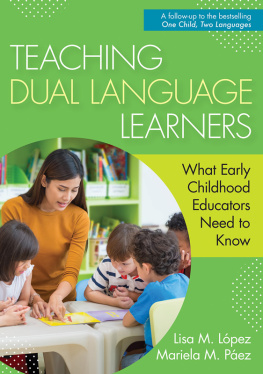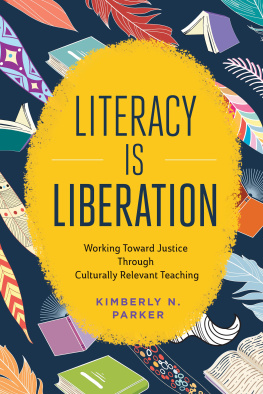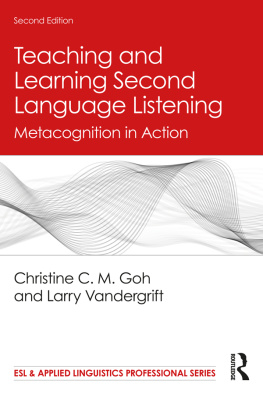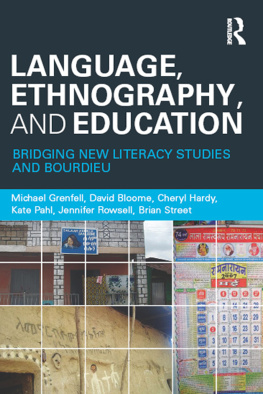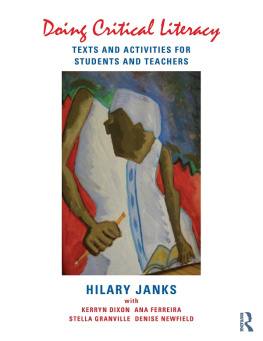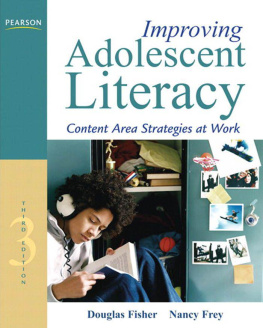Title page
The Early Literacy Handbook
Making sense of language and literacy with children birth to seven - a practical guide to the context approach
by Dominic Wyse and Christine Parker
Copyright page
Originally published by Practical Pre-School Books, A Division of MA Education Ltd, St Judes Church, Dulwich Road, Herne Hill, London, SE24 0PB.
Tel: 020 7738 5454
www.practicalpreschoolbooks.com
MA Education Ltd 2012
2013 digital version by Andrews UK Limited
www.andrewsuk.com
All images MA Education Ltd., other than the images listed below. All photos other than the below taken by Lucie Carlier.
Front cover images: Left: MA Education, top right: iStockphoto.com/Liza McCorkle, bottom right: (Mike Booth)/Alamy.
Chapter 4 MA Education Ltd photo taken by Ben Suri
All rights reserved. No part of this publication may be reproduced, stored in a retrieval system, or transmitted by any means, electronic, mechanical, photocopied or otherwise, without the prior permission of the publisher.
Introduction

Experimenting with chalk to communicate meaning
The heart of this book is a new approach to the teaching of language and literacy: its focus is exemplary classroom practice built on rigorous theory and evidence. The writing of the book was made possible by the authors combined experience of more than 40 years in education. Christine brings to the book most of all her wealth of experience as a nursery educator, head of early years centre, primary teacher and primary head teacher. Dominic brings his experience as a teacher, as a teacher trainer, as a researcher and, for this book, a new theory on the teaching of English, language and literacy (TELL theory). But even more than these features, we hope we communicate our undimmed excitement and passion for teaching and learning.
There are many very good publications can contribute to childrens reading development. Contextualised teaching begins with whole texts that engage childrens interest and motivation. The most important features of texts, such as the way narrative connects with childrens sense of wonder and with their everyday lives, are emphasised first and foremost. Work on the sentences, words, letters and phonemes then follows naturally because these linguistic building blocks are made naturally meaningful when children experience them in the context of whole texts. Teaching about letters and phonemes is an important component in learning to read, but there are serious risks if it is magnified above all others, especially as the focus of high stakes national testing. This is one reason why educators and parents must fight for a balanced and research-informed approach to literacy teaching.
We wanted the links between theory and practice to be crystal clear. For that reason each chapter begins with a short account of the most relevant theory and research. This is then exemplified and enriched by dynamic guidance and insights into the practice of teaching. Many of the examples were created as Christine drew on the practice of teachers in her school at the time of writing. Although practice sections come after theory sections in the book, during the process of writing we were constantly questioning and revising both to ensure that there was a genuine fit between the two.
The book is divided into three sections on: language and literacy, reading, and writing. Language is at the heart of literacy; in fact as we argue in our chapter on multilingualism, languages are at the heart of literacy in every classroom in the land. But where some otherwise admirable accounts of literacy teaching fail is in their lack of attention to reading and writing processes as important in their own right. Yes, they are connected in literacy, but effective teaching and learning requires an understanding of their distinctness as well as the links between them.
Perhaps the most important chapter in the book is High quality literacy teaching. It is here that we nail our colours to the mast in our description of what we consider to be exemplary practice. But such practice is also underpinned by the thinking demonstrated in all the other chapters in the book. Appropriate knowledge and skills are needed by educators for each of the different phases and elements of any lesson. The sessions shown in the high quality literacy teaching chapter are not meant to suggest a rigid, fixed format (no return to the literacy hour is implied here!) Variation is a necessary part of good teaching, not least to sustain childrens interest. Once again the other chapters of the book reveal the nuances that are necessary, but more important is the need for you to avoid the idea of recipes and to release your own creativity and imagination for developing the curriculum. By combining messages from different chapters we hope your ideas will transcend the linear nature of this conventional printed text, just like the ebb and flow of teaching and learning that emerges from real engagement with childrens interests.
The first chapter of the book shows how you can access and use the wealth of language and literacy experiences that all children bring from their homes and communities to inform teaching and learning. This is closely followed by advice on how to motivate children for learning. Language is the driving force of our approach, specifically the languages that children use and the language that you use as part of your interaction with children. Concluding the first section with the chapter on assessment is perhaps misleading, as the importance of learning from observations and assessments of children is a strand that runs through the whole book.
The other parts of the book have both common and distinct elements. Both begin with the use of whole texts, suggest physical and social environments that are most likely to help children learn, and offer typical classroom strategies for teaching reading and writing effectively. As for distinct elements: in the reading section, the rich potential of childrens names is highlighted (relatively insignificant to many adults, yet vital for childrens learning). In the writing section, the final chapter covers handwriting, but this does not imply a lack of importance. In fact, you may be surprised to see one of our rare recommendations for decontextualised teaching!
At the time of writing, phonics teaching is once again high on the political agenda. If there is any political intent behind this book it is to stand firm, argue strongly for evidence and balance, and reclaim the curriculum and its pedagogy for you and your children. We hope you enjoy our book, and we hope it supports you in making a difference in childrens lives.
TELL theory was first presented in 2011 at a keynote symposium at the American Literacy Research Association. The theory has been published in the 10,000 word introduction to the four volume set Literacy Teaching and Education: SAGE library of educational thought and practice (Wyse D, ed, 2011. Sage, London, UK). The theory also builds on Teaching English, Language and Literacy (Wyse D, Jones R, 2007. Routledge, London, UK); and The Routledge International Handbook of English, Language and Literacy Teaching (Wyse D, Andrews R, Hoffman J, eds, 2010. Routledge, London, UK).
For example: Bruce T, Spratt J (2011) Essentials of Literacy from 0-7. Second Edition. Sage, London, UK; and Whitehead M (2004) Language and Literacy in the Early Years. Third Edition. Sage, London, UK.
We use the term educator throughout the book to describe all teachers, professionals and practitioners working to help childrens learning.
Throughout the book when we refer to phonemes, we use the following format: /a/ (except in Table 12.1 in Chapter 12 where we use symbols from the international phonetic alphabet). When we refer to letter names we identify them like this: A. When referring to a letter we identify it like this: a.


